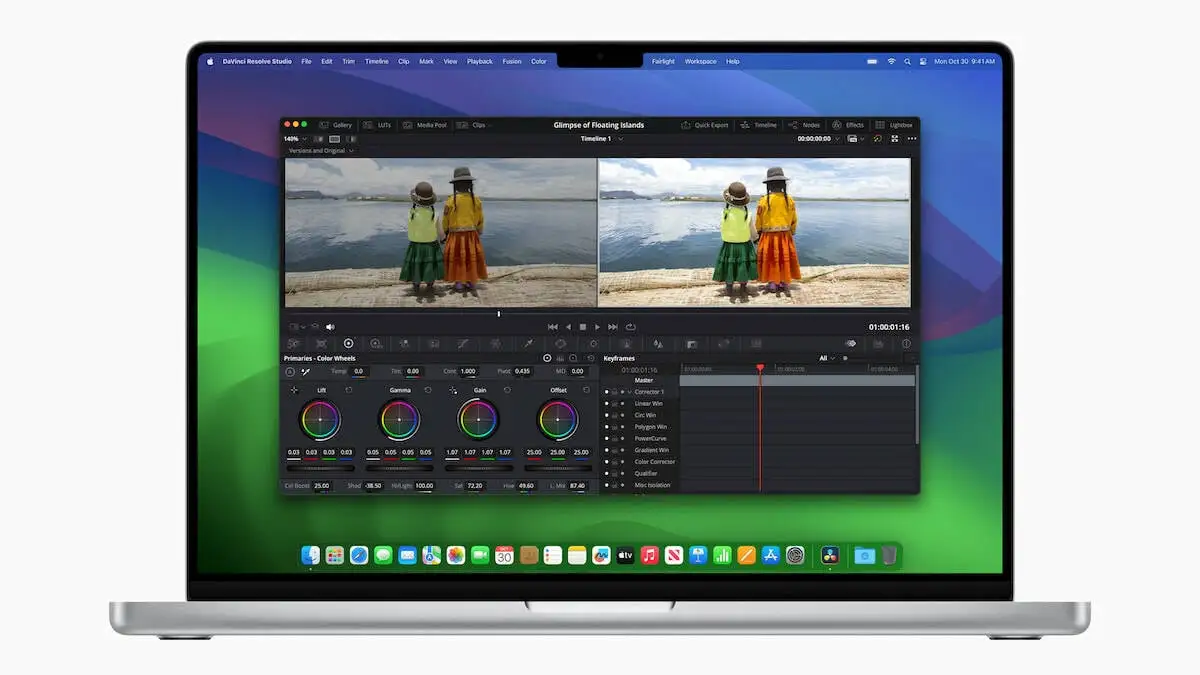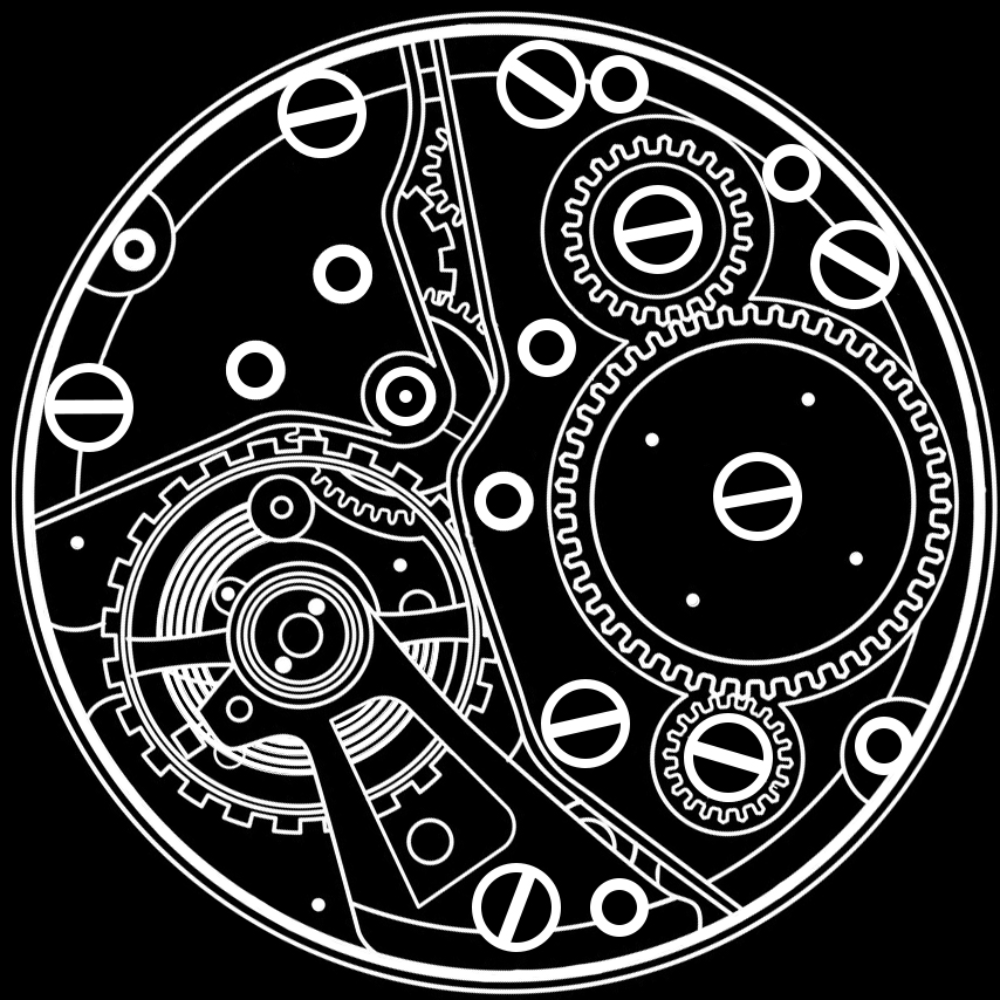deleted by creator
Especially when 16g is something like $50.
At consumer prices. There’s no way Apple doesn’t pay wholesale rates for memory.
they have the memory controllers built into their processors now. So adding memory is even cheaper, it just takes the modules themselves
With Apple’s new iBits™ the 0s are so much rounder and the 1s are so smooth and shiny that they’re worth at least twice as much as regular bits.
I can’t wait for my iBits. Also the fact that iBytes have ten iBits is revolutionary. 25% more computing power in each iByte!
It’s actually about the bandwidth: https://eclecticlight.co/2020/11/11/how-unified-memory-blows-the-socs-off-the-m1-macs/
The bandwidth provided by unified memory is just unparalleled because of the tightly integrated components found on Apple Silicon.
“Unparalleled”, huh? So I’m sure gamers have fully embraced Apple hardware because it’s objectively better, correct? You surely have links to benchmarks of Apple devices beating the pants off PCs… Right??
In my entirely anecdotal experience, MacOS is significantly better at RAM management than Windows. But it’s still a $1,600 USD computer, and 16GB of RAM costs nearly nothing, it’s just classic Apple greed.
I’m also under the impression the M powered books are much better at thermo management and battery usage over PC versions?
ARM chips are generally better at that.
Really hoping Snapdragon Oryon can be the same boon for Windows/Linux that Apple’s M CPUs were for Mac
How did you measure this?
The main metric has been with Adobe apps. 2017 Macs with 8GB of RAM are still able to run Premiere and a few others things smoothly simultaneously. Windows machines with the same config were crashing constantly and kept going.
But I’m still not defending Apple here. It’s been 6 years, and their base level MacBook still ships with the same amount of RAM.
Sounds like “feelz” measuring to me
It’s not anecdotal in the least. It’s been widely tested. There’s a reason an M1 Mac mini with 8GB of RAM can load and fully support over 100 tracks in Logic Pro. The previous Intel machines would buckle with just a few.
ARM is not comparable to x86-64. The former is totally unified, the latter totally modular.
I can load even more tracks with 0 RAM on Windows.
Just one big page file.
8GB for this price in 2023 is a SCAM. All Apple devices are a SCAM. Many pay small fortunes for luxurious devices full of spyware and which they have absolutely no control over. It’s insane. They like to be chained in their golden shackles.
deleted by creator
Just an example: If Apple simply wants to turn your iPhone into a brick, it can do that and there is no one who can reverse it.
Um. No they can’t. The class action lawyers would have a field day with that.
They already do so with apps.
If Apple deems the app too old, then it won’t be compatible and is as useful as a brick.
You know I have software on my PC old enough I can’t run it even in compatibility mode, I’d need to spin up a VM to run it or a pseudoVM like DOSBox, it’s not unheard of it’s not even uncommon.
they have the power to do it, is what I’m saying
I don’t trust MacOS, its proprietary code obviously hides evil spying and control functions over the user. Apple has always been an enemy of the free software community because it is not in favor of its loyal customers but only its greedy shareholders. There is no balance, Apple has always adopted anti-competitive measures. That’s just to say the least.
It took the EU legislation to force them adapt USB 3 charger port. Their consumer base are their cows.
And even though they have USB 3 ports, it’s not even a proper USB 3 port as the lower-end models only support USB 2 speeds (480Mbps max)!
USB 2.0 in 2023 LOL LOL LOL LOL
Lightning was also 480Mbps so I wonder if they just changed the port but kept most of the internals the same
yeah, I forgot about that, it’s a USB-C type port.
Exactly lol
Apple has always been an enemy of the free software community
Apple is one of the largest contributors to open source software in the world and they’ve been a major contributor to open source since the early 1980’s. Yes, they have closed source software too… but it’s all built on an open foundation and they give a lot back to the open source community.
LLVM for example, was a small project nobody had ever heard of in 2005, when Apple hired the university student who created it, gave him an essentially unlimited budget to hire a team of more people, and fast forward almost two decades it’s by far the best compiler in the world used by both modern languages (Rust/Swift/etc) and old languages (C, JavaScript, Fortran…) and it’s still not controlled in any way by Apple. The uni student they hired was Chris Lattner, he is still president of LLVM now even though he’s moved on (currently CEO of an AI startup called Modular AI).
Well, look at the annual contribution that Apple makes to the BSD team and see that Apple uses several open source software in its products but with minimal financial contribution. Even more so for a company of this size. Apple only “donates” when it is in its interest that such software is ready for it to use.
That’s too simplistic. For example, the entry level M1 MacBook Air is hands down one of the best value laptops. It’s very hard to find anything nearly as good for the price.
On the high end, yeah you can save $250-400 buying a similarly specced HP Envy or Acer Swift or something. These are totally respectable with more ports, but they have 2/3rd the battery life, worse displays, and tons of bloatware. Does that make them “not a scam”?
(I’m actually not sure what “spyware” you’re referring to, especially compared to Windows and Chromebooks.)
When compared to other professional level laptops the macbooks do put up a good fight. They have really high quality displays which accounts for some of the cost and of course compared to a commercial grade laptop like a thinkpad the prices get a lot closer(when they arent on sale like thinkpads frequently do).
That said even then the m1 macbook is over a thousand dollars after tax and that gets you just 256GB of storage and 8GB of ram. Theyre annoyingly not as easy to find as intel offerings but you can find modern ryzen laptops that can still give you into the teens of screen on time for less with way more ram and storage space. The m1 is still the better chip in terms of power per watt and battery life overall, but then getting the ram and storage up to spec can make it $700 more than a consumer grade ryzen.
They have really high quality displays which accounts for some of the cost and of course compared to a commercial grade laptop like a thinkpad
Is that important for a professional laptop? I mean, if you use it for work every day, you probably want a screen that is at least 27 inches, preferably two. It should be capable of adjusting its height for better ergonomics.
If you work in something that involves graphic design or imaging absolutely
One of the features they highlighted is is the built in display has very similar specs to their 6K 32" professional display (which, by the way, costs more than this laptop). So when you’re not working at your desk you’ll still have a great display (and why are you buying a laptop unless you occasionally work away from your desk?)
- Both have a peak brightness is 1600 nits (a Dell XPS will only do ~600 nits and that’s brighter than most laptops).
- Both have 100% P3 color gamut (Dell XPS only gets to 90% - so it just can’t display some standard colors)
- even though it’s an LCD, black levels are better than a lot of OLED laptops
- contrast is also excellent
- 120hz refresh rate, which is better than their desktop display (that only runs at 60Hz. Same as the Dell XPS)
- 245 dpi (again, slightly better than 218 dpi on the desktop display, although you sit further away from a desktop… Dell XPS is 169 dpi)
I love Dell displays, I’ve got two on my desk. But even the Dell displays that cost thousands of dollars are not as good as Apple displays.
I agree with that. I think there are cheaper laptops, where you can spend less to get less. Not everyone needs a metal body and all day battery life.
I 'm not refering to Windows or ChromeOS ( that are full of spyware too ) . The first generation of Mac M1 had a reasonably more “accessible” price precisely to encourage users to migrate to ARM technology and consequently also encourage developers to port their software, and not because Apple was generous. Far from it.Everything Apple does in the short or long term is to benefit itself.
And not to mention that it is known that Apple limits both hardware and software on its products to force consumers to pay the “Apple Idiot Tax”. There is no freedom whatsoever in these products, true gilded cages. Thank you, but I don’t need it. Software and hardware freedom are more important.
I didn’t claim that Apple is doing anything to be “generous”. That seems like it’s moving the goal posts. Say, are other PC manufacturers doing things out of generosity? Which ones?
Even the M2 and M3 Macs are a good value if you want the things they’re good at. For just a few hundred more, no other machine has the thermal management or battery life. Very few have the same build quality or displays. If you’re using it for real professional work, even just hours of typing and reading, paying a few extra hundred over the course of years for these features is hardly a “scam”.
You didn’t elaborate on your “spyware” claim. Was that a lie? And now you claim it’s “known” that Apple limits hardware and software. Can you elaborate?
MacBooks do have excellent screens, software integration and everything else, that’s a fact and I don’t take that away from Apple. But the problem is that it’s not worth paying for this in exchange for a system that is completely linked to your Apple ID, tracking all your behavior for advertising purposes and whatever else Apple decides. Privacy and freedom are worth more. If you can’t check the source code you can’t trust what Apple says, they can lie for their own interests. Have you ever read Apple’s privacy policy regarding Apple ID, for example? If not, I recommend it.
I think that decision makes sense.
What you said got me worried, so I looked into the claim that it is “tracking all your behavior for advertising purposes and whatever else Apple decides”. That’s a convincing concern, and you’ve changed my mind on this. I don’t see any evidence that they’re doing anything close to this level of tracking — the main thing they seem to track is your Mac App Store usage — but they may have the potential to do so in the enshittified future. That gives me pause.
Apple has repeatedly stressed that they’re privacy focused in the past, while a major departure from that could happen absolutely it feels a bit like borrowing trouble to assume it will happen soon. Google is an advertising company first, microsoft is just a mess, but Apple is a luxury hardware producer, they have minimal reason to damange their reputation in a way that would make those sorts of consumers upset.
Please note that I’m not saying it’s impossible just unlikely in the near future
That assessment sounds right. I think we just need to stay vigilant as consumers. We have defeasible reason to trust Apple right now. But we’ve seen, especially recently, what happens when we let corporations take advantage of that hard earned trust for short term gain.
All Apple devices are a SCAM.
True. Sometimes I look the specs and prices of Apple devices while visiting large electronic stores. I don’t understand how people who aren’t rich can rationalize buying an Apple device. While it’s true that Windows has become increasingly plagued by invasive ads recently, and macOS seems like the only alternative for many, this issue is relatively recent. On the other hand, MacBooks have been overpriced for years.
Pairing a chip this capable with just 8GB of shared memory is also just a waste of good silicon. Which makes the price all the more insulting to me.
Like, this is the equivalent of Usain Bolt losing one of his legs
“His one leg is still more capable than regular person’s two legs”
That is exactly what Apple would say, isn’t it
Seems fair, you pay 1000 for the logo and 600 for the hardware.
It’s a very nice logo. And it lights up. Hard to argue with their pricing, really.
It actually doesn’t light up anymore…
For $375 you can get an iFlashlight to point at the logo
Ordered the iFleshlight. Looking forward to seeing the jealous looks I get at the coffee shop.
It’s actually just the display backlight which is why I had to cover it with aluminium tape instead of just disconnecting the wire. Not only don’t I want an ad on my computer I especially don’t want an illuminated one.
Apple laptops and gaming headphones, keeping it classy
Instead I feel it’s the opposite because that memory is shared with the GPU. So if you’re gaming even with some old game, it’s like having 4gb for the system and 4gb to the GPU. They might claim that their scheduler is magic and can predict memory usage with perfect accuracy but still, it would be like 6+2 GB. If a game has heavy textures they will steal memory from the system. Maybe you want to have a browser for watching a tutorial on YouTube during gaming, or a chat. That’s another 1-2 gb stolen from the CPU and GPU.
Their pricing for the ram is ridiculous, they’re charging $300 for just 8gb of additional memory! We’re not in the 2010s anymore!
The most expensive 8GB DDR5 stick I can find on Amazon is about us$35. There are 64GB sets that are under us$200!
Apple should be ashamed.
deleted by creator
I think the history is such that a “PC” is a computer compatible with the “IBM PC” which Macs were historically not and modern ones aren’t either.
But I still like “Windows computer”, we can abbreviate that to “WC”.
Removed by mod
I agree with you, but you know how Apple operates, slapping a shiny new name on an already existing concept and making it sound premium.
True by the letter but not really by practice. PC is synonymous with a computer running Windows, or Linux at a push. I don’t know whether that’s because of Microsoft’s early market dominance or because Apple enjoys marketing itself as a totally different entity, or some combination of the two. But yeah, usage determines meaning more than what the individual words mean in a more literal sense.
deleted by creator
Originally “PC” was IBMPC or PC Compatible (as in compatible with IBM without using their trademark). An IBMPC could have run DOS, Windows or even OS/2
poop. it’s poop.
I doubt it’s the last time. also while “PC” means personal computer, it was a very specific brand name by IBM, not a general purpose term. their computers (and clones later) became synonymous with x86-windows machines.
Even apple themselves have always distanced themselves from the term (I’m a Mac, and I’m a PC…).
deleted by creator
deleted by creator
the mac pro is a terrible deal even compared to their own mac studio. It has the same specs but for almost $1000 extra. Yes, the cheese grater aluminum case is cool, but $1000 cool?
When you’re nearing the terabytes range of RAM you should consider moving your workload to a server anyway.
deleted by creator
The Apple M series is not ARM based. It’s Apple’s own RISC architecture. They get their performance in part from the proximity of the RAM to the GPU, yes. But not only. Contrary to ARM that has become quite bloated after decades of building upon the same instruction set (and adding new instructions to drive adoption even if that’s contrary to RISC’s philosophy), the M series has started anew with no technological debt. Also Apple controls both the hardware to the software, as well as the languages and frameworks used by third party developers for their platform. They therefore have 100% compatibility between their chips’ instruction set, their system and third party apps. That allows them to make CPUs with excellent efficiency. Not to mention that speculative execution, a big driver of performance nowadays, works better on RISC where all the instructions have the same size.
You are right that they do not cater to power users who need a LOT of power though. But 95% of the users don’t care, they want long battery life, light and silent devices. Sales of desktop PCs have been falling for more than a decade now, as have the investments made in CISC architectures. People don’t want them anymore. With the growing number of manufacturers announcing their adoption of the new open-source RISC-V architecture I am curious to see what the future of Intel and AMD is. Especially with China pouring billions into building their own silicon supply chain. The next decade is going to be very interesting. :)
deleted by creator
Interesting, I thought they had ditched the ARM license completely, my mistake.
deleted by creator
The whole “Apple products are great because they control both software and hardware” always made about as much sense to me as someone claiming “this product is secure because we invented our own secret encryption”.
Here’s an example for that: Apple needed to ship an x86_64 emulator for the transition, but that’s slow and thus make the new machines appear much slower than their older Intel-based ones. So, what they did was to come up with their own private instructions that an emulator needs to greatly speed up its task and added them to the chip. Now, most people don’t even know whether they run native or emulated programs, because the difference in performance is so minimal.
The Apple M series is not ARM based. It’s Apple’s own RISC architecture.
M1s through M3s run ARMv8-A instructions. They’re ARM chips.
What you might be thinking of is that Apple has an architectural license, that is, they are allowed to implement their own logic to implement the ARM instruction set, not just permission to etch existing designs into silicon. Qualcomm, NVidia, Samsung, AMD, Intel, all hold such a license. How much use they actually make of that is a different question, e.g. AMD doesn’t currently ship any ARM designs of their own I think and the platform processor that comes in every Ryzen etc. is a single “barely not a microprocessor” (Cortex A5) core straight off ARM’s design shelves, K12 never made it to the market.
You’re right about the future being RISC-V, though, ARM pretty much fucked themselves with that Qualcomm debacle. Android and android apps by and large don’t care what architecture they run on, RISC-V already pretty much ate the microcontroller market (unless you need backward compatibility for some reason, heck, there’s still new Z80s getting etched) and android devices are a real good spot to grow. Still going to take a hot while before RISC-V appears on the desktop proper, though – performance-wise server loads will be first, and sitting in front of it office thin clients will be first. Maybe, maybe, GPUs. That’d certainly be interesting, the GPU being simply vector cores with a slim insn extension for some specialised functionality.
Thanks for the clarification. I wonder if/when Microsoft is going to hop on the RISC train. They did a crap job trying themselves at a ARM version a few years back and gave up. A RISC Surface with a compatible Windows 13 and proper binary translator (like Apple did with Rosetta) would shake the PC market real good!
The Apple M series is not ARM based.
Very confident it is ARM based.
a toy for professional workloads
[rant]
I think this is one of those words which has lost its meaning in the personal computer world. What are people doing with computers these days? Every single technology reviewer is, well, a reviewer - a journalist. The heaviest workload that computer will ever see is Photoshop, and 98% of the time will be spent in word processing at 200 words per minute or on a web browser. A mid-level phone from 2016 can do pretty much all of that work without skipping a beat. That’s “professional” work these days.
The heavy loads Macs are benchmarked to lift are usually video processing. Which, don’t get me wrong, is compute intensive - but modern CPU designers have recognized that they can’t lift that load in general purpose registers, so all modern chips have secondary pipelines which are essentially embedded ASICs optimized for very specific tasks. Video codecs are now, effectively, hardcoded onto the chips. Phone chips running at <3W TDP are encoding 8K60 in realtime and the cheapest i series Intel x64 chips are transcoding a dozen 4K60 streams while the main CPU is idle 80% of the time.
Yes, I get bent out of shape a bit over the “professional” workload claims because I work in an engineering field. I run finite elements models and, while sparce matrix solutions have gotten faster over the years, it’s still a CPU intensive process and general (non video) matrix operations aren’t really gaining all that much speed. Worse, I work in an industry with large, complex 2D files (PDFs with hundreds of 100MP images and overlain vector graphics) and the speed of rendering hasn’t appreciably changed in several years because there’s no pipeline optimization for it. People out there doing CFD and technical 3D modeling as well as other general compute-intensive tasks on what we used to call “workstations” are the professional applications which need real computational speed - and they’re/we’re just getting speed ratio improvements and the square root of the number of cores, when the software can even parallelize at all. All these manufacturers can miss me with the “professional” workloads of people surfing the web and doing word processing.
[\rant]
deleted by creator
Indeed! It makes the benchmarks that much more disingenuous since pros will end up CPU crunching. I find video production tedious (it’s a skill issue/PEBKAC, really) so I usually just let the GPU (nvenc) do it to save time. ;-)
Yeah, I gave Apple a try over the last two years, largely because I was annoyed with Google and wanted to ditch Android. I’ve been fed up since about 6 months in, but gave it some more time, which led to an eventual waiting game to get the replacements I want.
I just picked up a Thinkpad P14s g4 AMD with a 7840u, 64GB of RAM, and a 3 year onsite warranty for $1270 after taxes. I added a 4TB Samsung 990 Pro for another $270. I can’t imagine spending more than that and only getting 8GB RAM (and less warranty), which is what I have assigned to the GPU. Plus I get to run Linux, which I really didn’t realize how much MacOS would leave me wanting.
The thing I’ll miss is the iPhone 13 Mini size. I found iOS to be absolute trash, but there’s just not an Android phone that’s a reasonable size. But at least I can run Calyx/Graphene on a Pixel and get a decent OS without spying.
I do like the M1 MBA form factor, too, but I’ll grab the Thinkpad X13s successor for portability and get a better keyboard. I don’t need top end performance out of that, I really just want battery life and passive cooling.
And don’t even get me started on the overpriced mess that are the Airpods Max. I much prefer the Audeze Maxwell and Sennheiser Momentum 4 I replaced them with.
deleted by creator
Tell that to Google Chrome
Do they store 32-bit integers as 16-bit internally or how does macOS magically only use half the RAM? Hint: it doesn’t.
Even if macOS was more lightweight than Windows - which might well be true will all the bs processes running in Windows 11 especially - third party multiplatform apps will use similar amounts of memory no matter the platform they run on. Even for simple use cases, 8 GB is on the limit (though it’ll likely still be fine) as Electron apps tend to eat RAM for breakfast. Love it or hate it Apple, people often (need to) use these memory-hogging apps like Teams or even Spotify, they are not native Swift apps.
I love my M1 Max MacBook Pro, but fuck right off with that bullshit, it’s straight up lying.
Pied Piper middle out compression for your RAM
But seriously it’s so ridiculous especially since he said it in an interview with a machine learning guy. Exactly the type of guy who needs a lot of RAM for his own processes working on his own data using his own programs. Where the OS has no control over precision, access patterns or the data streaming architecture.
Do they store 32-bit integers as 16-bit internally or how does macOS magically only use half the RAM? Hint: it doesn’t.
As a Mac programmer I can give you a real answer… there are three major differences… but before I go into those, almost all integers in native Mac apps are 64 bit. 128 bit is probably more common than 32.
First of all Mac software generally doesn’t use garbage collection. It uses “Automatic Reference Counting” which is far more efficient. Back when computers had kilobytes of RAM, reference counting was the standard with programmer painstakingly writing code to clear things from memory the moment it wasn’t needed anymore. The automatic version of that is the same, except the compiler writes the code for you… and it tends to do an even better job than a human, since it doesn’t get sloppy.
Garbage collection, the norm on modern Windows and Linux code, frankly sucks. Code that, for example, reads a bunch of files on disk might store all of those files in RAM for for ten seconds even if it only needs one of them in RAM at a time. That burn be 20GB of memory and push all of your other apps out into swap. Yuck.
Second, swap, while it’s used less (due to reference counting), still isn’t a “last resort” on Macs. Rather it’s a best practice to use swap deliberately for memory that you know doesn’t need to be super fast. A toolbar icon for example… you map the file into swap and then allow the kernel to decide if it should be copied into RAM or not. Chances are the toolbar doesn’t change for minutes at a time or it might not even be visible on the screen at all - so even if you have several gigabytes of RAM available there’s a good chance the kernel will kick that icon out of RAM.
And before you say “toolbar icons are tiny” - they’re not really. The tiny favicon for beehaw is 49kb as a compressed png… but to draw it quickly you might store it uncompressed in RAM. It’s 192px square and 32 bit color so 192 x 192 x 32 = 1.1MB of RAM for just one favicon. Multiply that by enough browser tabs and… Ouch. Which is why Mac software would commonly have the favicon as a png on disk, map the file into swap, and decompress the png every time it needs to be drawn (the window manager will keep a cache of the window in GPU memory anyway, so it won’t be redrawn often).
Third, modern Macs have really fast flash memory for swap. So fast it’s hard to actually measure it, talking single digit microseconds, which means you can read several thousand files off disk in the time it takes the LCD to refresh. If an app needs to read a hundred images off swap in order to draw to the screen… the user is not going to notice. It will be just as fast as if those images were in RAM.
Sure, we all run a few apps that are poorly written - e.g. Microsoft Teams - but that doesn’t matter if all your other software is efficient. Teams uses, what, 2GB? There will be plenty left for everything else.
Of course, some people need more than 8GB. But Apple does sell laptops with up to 128GB of RAM for those users.
Almost all programs use both 32bit and 64bit integers, sometimes even smaller ones, if possible. Being memory efficient is critical for performance, as L1 caches are still very small.
Garbage collection is a feature of programming languages, not an OS. Almost all native linux software is written in systems programming languages like C, Rust or C++, none of which have a garbage collector.
Swap is used the same way on both linux and windows, but kicking toolbar items out of ram is not actually a thing. It needs to be drawn to the screen every frame, so it (or a pixel buffer for the entire toolbar) will kick around in VRAM at the very least. A transfer from disk to VRAM can take hundreds of milliseconds, which would limit you to like 5 fps, no one retransfers images like that every frame.
Also your icon is 1.1Mbit not 1.1MB
I have a gentoo install that uses 50MB of ram for everything including its GUI. A webbrowser will still eat up gigabytes of ram, the OS has literally no say in this.
My 32/16 bit integer example was just that: an example where one was half the size as the other. Take 128/64 or whatever, doesn’t matter as it doesn’t work like that (which was my point).
Software written in non-GC based languages runs on other operating systems as well.
I used MS Teams as an example, but it’s hardly an exception when it comes to Electron/WebView/CEF apps. You have Spotify running, maybe a password manager (even 1Password uses Electron for its GUI nowadays), and don’t forget about all the web apps you have open in the browser, like maybe GMail and some Google Docs spreadsheet.
And sure, Macs have fast flash memory, but so do PC notebooks in this price range. A 990 Pro also doesn’t set you back $400 per terabyte, but more like … $80, if even that. A fifth. Not sure where you got that they are so fast it’s hard to measure.
There are tests out there that clearly show why 8 GB are a complete joke on a $1600 machine.
So no, I still don’t buy it. I use a desktop Windows/Linux machine and a MacBook Pro (M1 Max) and the same workflows tend to use very similar amounts of memory (what a surprise /s).
I felt getting ripped off by just reading the article. My recent PC build has 32 GB, is cheaper and the upgrade to 64 GB (meaning additional pair of 16 GB) only costs me around 100 Euros. It’s nice that their devices are probably more effective and need less RAM, which the iPhones proved to be correct. But that does not mean the cost of the additional RAM units are more expensive. Apple chose to make them expensive.
It makes it not feel like a premium device
Because it’s not
Honestly I was considering getting one because I could use a nice laptop to do stuff on but 8GB is inexcusably bad so yeah pass
16 gb optiplexes on sale for 85 dollars on eBay. Dont come with windows, but neither do macs :P
Install Linux and this is the way.
Yeah yeah, I do think even like windows 11 these days. I’m a debian with KDE guy.
I looked at a few Lenovo and MS laptops to see what they are charging to jumps from 8 to 16 GB.
They are very close to what Apple charges.
So, they are ALL ripping us off!I just got a laptop with 64GB of DDR5 ram for $870 or so from HP, so I wouldn’t take these specific examples you found as gospel.



















